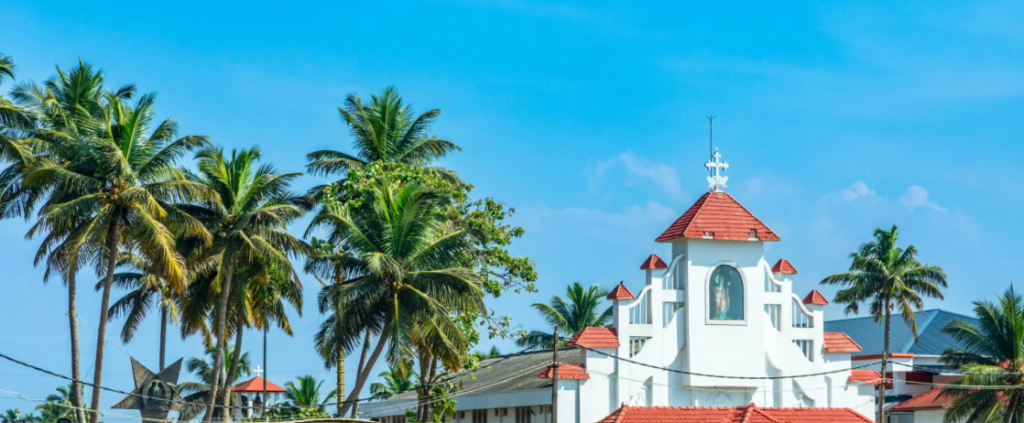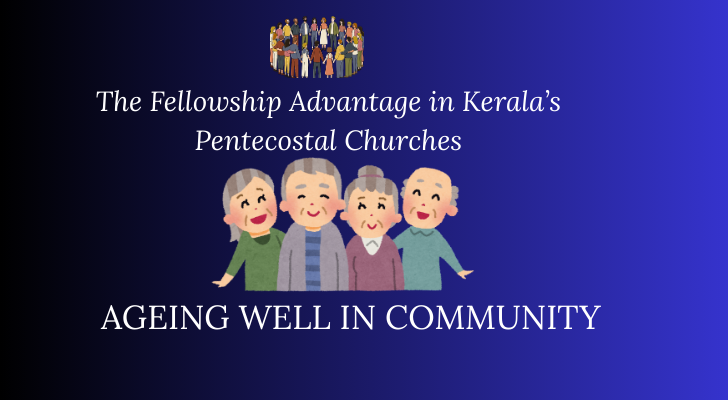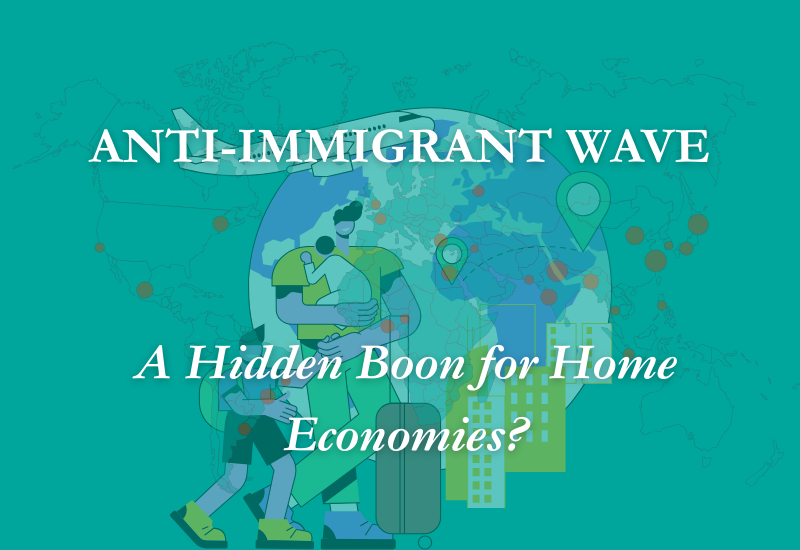The history of Christian reforms globally has reshaped religious communities, practices, and theological doctrines, with the Protestant Reformation standing as a watershed moment in the Western Christian world. However, Eastern Christian traditions, including the Syriac Orthodox Church, have also witnessed reform movements. In India, the St. Thomas Apostolic tradition, embodied by the Indian Orthodox Church, offers a rich context for examining whether its reforms were truly transformative or merely superficial adaptations to external pressures.
The Formation of the Marthoma Church and Local Liturgy
The reform within the Indian Syrian Church, particularly the establishment of the Marthoma Church, is often framed as a significant moment of transformation. One of the central changes was the shift from Syro-Aramaic to Malayalam liturgy, making worship more accessible to the local population. However, a closer look suggests that this reform was more practical than theological. While adopting the local language allowed congregants to engage more directly with the liturgy, it did not challenge the core doctrinal foundations of the church. This shift exemplifies what sociologist Max Weber described as “rationalization,” where religious institutions adapt to practical concerns without fundamentally altering their spiritual outlook.
Declining Demographics and Fertility Rates
In a Marthoma Parish in Central Travancore near Tiruvalla, comprising approximately 400 families, only eight baptisms and fewer than ten weddings were recorded in 2023. In contrast, a nearby Indian Syrian Orthodox Church of similar size celebrated 17 baptisms and 23 weddings. These figures underscore a growing demographic disparity between the Marthoma Church and its Orthodox and Catholic counterparts, raising questions about the sociocultural and theological factors at play.
Kerala’s Total Fertility Rate (TFR) has been consistently below the national average. As of recent data, it is around 1.8 children per woman, which is below the replacement level of 2.1.Although specific data for the Marthoma community’s fertility rate is not readily available, it is estimated to be around 1.6 to 1.7 children per woman, which is below Kerala’s state average of around 1.8.
Sociologist Peter Berger’s theory of secularization provides insight into the Marthoma Church’s demographic decline. The Marthoma community’s lower birth and marriage rates, compared to Orthodox and Catholic Syrians, are symptomatic of a broader liberalization within the church, particularly regarding family planning.
While Catholic and Orthodox teachings strongly discourage contraception and encourage larger families, the Marthoma Church’s more flexible stance on family planning has contributed to smaller family sizes and a depleting population. Berger emphasized that religious traditions with strong adherence to conservative family norms tend to maintain higher birth rates, suggesting that the Marthoma Church’s liberal theology may be undermining its demographic vitality.

Protestant values have significantly influenced the Marthoma community’s approach to family life, contributing to lower fertility rates. The emphasis on education and personal development, individual autonomy in family planning, and practical economic considerations align with Protestant ethics, encouraging smaller family sizes. Compared to more traditional Christian groups, the Marthoma Church’s liberal stance on contraception and modern social issues, shaped by Protestant and Anglican influences, supports a pragmatic approach to family planning. These values have facilitated a shift towards smaller families, reflecting broader changes in fertility patterns within Protestant-influenced communities.
This demographic trend reflects a broader shift, where younger generations in the Marthoma community, influenced by Western values, are postponing or avoiding marriage altogether. A Marthoma Church member in Australia observed that fewer youth in their community are getting married, a trend that mirrors what is seen in urban Indian settings, particularly in Kerala’s metropolitan areas. This mirrors global demographic patterns observed in liberal Protestant denominations, which have struggled to maintain their membership base as they embrace theological flexibility.
Theological Liberalization and Influence of Western Values
The Marthoma Church’s openness to Anglican and Protestant influences has brought significant shifts in its liturgical and theological practices. While Orthodox and Catholic Syrians have preserved their rich doctrinal and liturgical traditions, resisting Western Christian liberalization, the Marthoma Church has adopted a more flexible approach. The abandonment of traditional practices, such as intercessory prayers to saints, aligns the Marthoma Church more closely with Protestant individualism. While these changes modernized the church, they also diluted its distinctiveness. The erosion of mystical elements in favor of rationalized faith, as Weber’s theory of disenchantment suggests, reflects a departure from the core tenets of Eastern Orthodoxy.
This theological liberalization has made the Marthoma Church more susceptible to broader Western influences, including movements like queer theology, which challenge traditional Christian views on marriage, gender, and family. While these progressive influences are embraced by some Protestant circles, they are fundamentally opposed by Orthodox Christianity and Catholicism, which continue to uphold conservative views on these issues. The Marthoma Church’s alignment with Western liberal values raises questions about its long-term cultural and theological identity.
Conversion to Pentecostalism and Evangelicalism
The Marthoma Church’s openness to Protestant theology has also facilitated a gradual drift toward Pentecostal and Evangelical movements, particularly in Central Travancore, where many Pentecostal congregations were formed by former Marthomites. A retired seminarian from the Marthoma Church noted that this shift has not been observed to the same degree in Orthodox or Catholic traditions, which have maintained stronger resistance to such conversions through their liturgical richness and rigid theological frameworks.
Berger’s pluralism thesis explains this trend by suggesting that religious liberalization often opens the door to greater competition from other religious movements. In contrast, the Orthodox and Catholic traditions have successfully retained their members by resisting liberalizing forces and upholding a more conservative theological framework, anchored in a strong liturgical tradition.
Family Planning, Doctrinal Flexibility, and Cultural Erosion
The Marthoma Church’s more flexible stance on family planning, including the use of contraception and abortion in cases of medical emergencies, stands in stark contrast to the Orthodox and Catholic Churches’ strict teachings on these issues. This doctrinal flexibility has likely contributed to smaller family sizes within the Marthoma community, further accelerating its demographic decline.
Beyond demographics, the Marthoma Church has also experienced significant cultural shifts. One of the most profound transformations has been its de-Syrianization and subsequent Anglicization. Over nearly 200 years of reforms, the church has distanced itself from its Syriac liturgical heritage. Many younger members of the Marthoma community now take pride in their Westernized identity, often unable to speak Malayalam or connect with their Kerala roots. This cultural erosion reflects a deeper shift within the church, where the embrace of Western values has fundamentally altered its identity.
Global and Sociopolitical Ramifications: Western Christianity and corporate missionary ventures
The broader consequences of Western Christianity and corporate missionary ventures have had notable effects on family values and social stability, particularly in societies within the Eastern Orthodox Christian world. This influence extends to India as well, beyond the Syrian Christian communities. For instance, there is a growing trend of free and open urban-cosmopolitan churches that advocate prosperity, financial success, and material advancement as outcomes of faith. However, alongside the formation of these movements, values associated with the societies from which these trends originate have also become more prevalent.
Religion is often used as a tool to achieve goals that extend beyond spiritual or religious matters, including political objectives. During European colonialism, Christian proselytization frequently accompanied the expansion of Western political influence. Missionary activities were not solely focused on spreading the faith but also on promoting cultural assimilation and fostering loyalty to colonial powers, thereby consolidating control and extending the reach of imperial authority.
Evangelistic efforts through public crusades, radio broadcasts, and cultural activities played a pivotal role in bringing liberal Western Christianity to Soviet Russia and the wider Eastern Bloc. Prominent evangelists like Billy Graham hosted large public gatherings in cities such as Moscow, attracting thousands of attendees. Christian orchestras, choirs, and music groups also toured the region, performing gospel music and other religious pieces. These events often combined preaching and personal testimonies, offering a blend of cultural and spiritual experiences that captivated many. This influx of Western evangelical and Protestant ideas introduced new theological perspectives and worship practices, which stood in stark contrast to the communal and sacramental traditions of the Orthodox Church.
Orthodox traditions: Resistance to western imperialism?
In countries like Russia, where restrictions on Western missionary activity have been in place for many years, religion is viewed as a crucial force for national unity and cultural cohesion. Russia’s Orthodox tradition has resisted Western religious liberalism, recognizing the potential threats it poses to national identity and the social fabric. This example highlights the global ramifications of religious liberalization, where the erosion of traditional values can contribute to broader societal instability.
In Russia and Hungary, religious laws that restrict the influence of non-traditional denominations, particularly Western religious movements, serve not only to protect cultural and religious identity but also reinforce traditional family structures and values. These nations are united in their efforts to preserve societal norms that are increasingly seen as threatened by Western liberalism and individualism. For instance, laws in both Russia and Hungary define marriage strictly as a union between a man and a woman, reflecting their commitment to preserving the institution of marriage as foundational to family and social stability.
Conflict between family values and western individualistic spirit
The broader context of these legal and cultural protections reflects a global conflict between traditional family values and the Western push for individualism and globalization. Since the end of colonial empires, Western powers have extended their influence through global economic institutions, trade, and cultural exports, often promoting liberal values that challenge deeply rooted family-centric norms in various societies, including India’s majority Hindu population, its small Syrian Christian community in Kerala, and regions where Eastern Orthodoxy prevails, such as Russia and Hungary. This tension underscores the struggle between preserving collective social traditions centered around family and adapting to the more individualistic, autonomy-focused principles associated with Western liberalism.
Protecting values and families: a geo-political concern?
Interestingly, figures like Viktor Orbán, Vladimir Putin, and Donald Trump, though from different political camps, share a common ideological stance on these issues. Orbán, while part of the EU and NATO, staunchly defends Hungarian family values, promoting strong families and a stable future for his nation. Putin mirrors these efforts in Russia, framing Orthodox Christianity as a key pillar of Russian identity and moral strength. Meanwhile, Trump represents conservative groups in the United States that cherish similar values, emphasizing the importance of traditional family structures and resisting liberal policies on issues such as marriage and gender roles. Despite their political differences, these leaders collectively symbolize a resistance to the global liberal agenda, uniting on the issue of preserving family, cultural heritage, and national sovereignty.
This alignment suggests that, beyond religion, the protection of traditional family structures is becoming a shared geopolitical concern, positioning these countries against the Western spirit of individualism and its global expansion through liberal economic and cultural institutions. This global clash is as much about preserving national identities as it is about maintaining cultural and social cohesion in the face of rapid modernization.
Reform or Modernization?
In evaluating the reforms of the Indian Syrian Church, it becomes evident that they were more cosmetic than transformative. The shift to local liturgy, the abandonment of traditional practices, and the break from Antioch represented significant adaptations, but they did not challenge the church’s core doctrinal beliefs. Instead, these reforms reflected a broader trend of modernization and Westernization, shaped by external pressures rather than deep theological reflection.
The demographic decline of the Marthoma Church, evidenced by fewer baptisms and weddings compared to its Orthodox and Catholic counterparts, illustrates the link between theological liberalization, family values, and community vitality. The Marthoma Church’s shift toward liberal theology has contributed to the erosion of traditional family structures, which once formed the bedrock of the community. In contrast, the Orthodox and Catholic traditions have remained more resistant to such changes, preserving their liturgical and family values, which continue to support their demographic growth and cultural cohesion.
Ultimately, the reforms of the Marthoma Church appear to have been more about adapting to external influences than engaging in meaningful theological transformation. As Berger’s secularization theory suggests, the church’s liberalization may have modernized its practices, but it has also weakened the traditional structures that sustained it, raising significant questions about the church’s future.
In conclusion, Lord Macaulay’s vision, as expressed in his “Minute on Education” of 1835, sought to create a class of Indians who embodied English tastes, morals, and intellect, while retaining their Indian heritage. This vision, alongside the influence of Christian missionaries with a CMS background, profoundly shaped the cultural and theological landscape of Kerala’s Syrian Christian denominations. Through their Anglican theological education and advocacy, these missionaries left an indelible mark on the Marthoma Church, which today reflects a deep commitment to British and Anglican liberal values. Macaulay and the missionaries would likely view the success of their cultural and theological influence with great satisfaction, seeing the Marthoma Christians as a living embodiment of their ideals. Even if the United Kingdom were to collapse in the years to come, Anglican values are likely to continue thriving through the Marthoma community, which is now spreading globally through immigration.
(Perumal Koshy)
Email: caushie@gmail.com
12 October 2024








